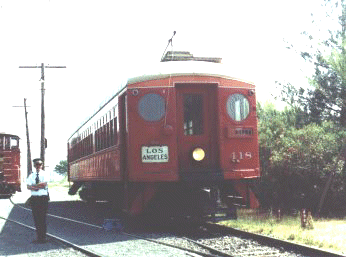
Index | Homepage | Good Links | Bad Links | Search | Guestbook/Forum
General Motors' investment of vast amounts of capital and energy in manipulating public opinion and state law may seem unprecedented, but this is, after all, a company's whose executives could proudly proclaim, "What's good for General Motors is good for America." Indeed, GM's campaign against electric cars has an eerily similar precedent.
In 1922, when only one in 10 Americans owned a car, GM launched an undercover campaign to destroy the then-dominant public transportation system. The campaign, which took 30 years to fully implement, focused on the country's clean (powered by electricity) and safe (accidents were infrequent) streetcar system.
GM, in partnership with Standard Oil of California and Firestone, began by buying the largest busmaker in the U.S. It then secretly funded a company called National City Lines, which by 1946 controlled streetcar operations in 80 cities.

Despite public opinion polls that, in Los Angeles for instance, showed 88 percent of the public favoring expansion of the rail lines after World War II, NCL systematically closed its streetcar systems down until, by 1955, only a few remained.
A federal antitrust investigation resulted in both indictment and conspiracy convictions for GM executives, but destroying a public transportation network that would cost hundreds of billions of dollars to reproduce today cost the company only $5,000 in fines.
Destroying the rail lines and replacing them with buses was only the first step. If private cars were going to dominate American transportation, they needed new roads to run on. GM also stands behind creation of the National Highway Users Conference, otherwise known as the highway lobby, which became the most powerful pressure group in Washington. GM promotional films from the immediate postwar years proclaim interstate highways to be the realization of "the American dream of freedom on wheels."
GM President Charles Wilson, who became Secretary of Defense in 1953, used his position to proclaim that a new road system was vital to U.S. security needs. He was assisted by newly appointed Federal Highway Administrator Francis DuPont, whose family was then the largest GM shareholder. Acting on a bill introduced by Senator Albert Gore, Sr. (the current vice president's father), Congress approved the $25 billion Federal-Aid Highway Act of 1956. "The greatest public works program in the history of the world," as Secretary of Commerce Sinclair Weeks called it, contained the seeds of our current gridlock.
Visionaries of 1939 might have envisioned that by 1960 there'd be a 14-lane
superhighway crisscrossing the nation at 100 miles per hour (with car spacing
controlled by "radio beams"), but bumper-to-bumper brake checks are more
familiar to the modern driver.
1997, Earth Action Network
http://www.emagazine.com/0397feat2_sb1.html